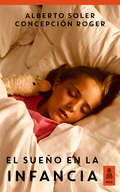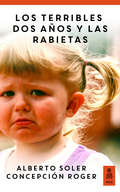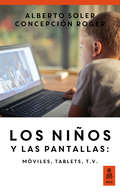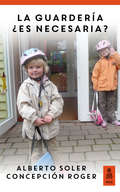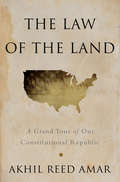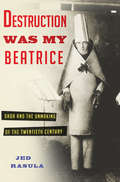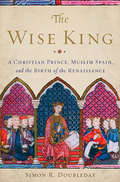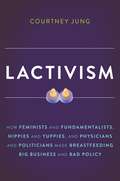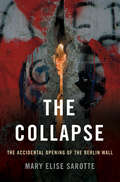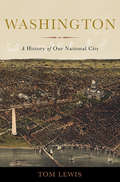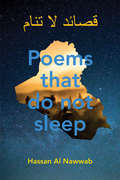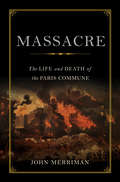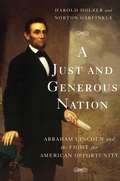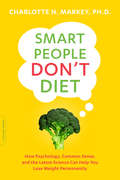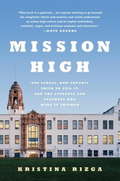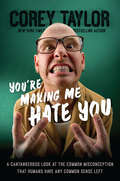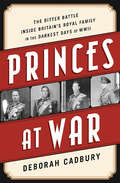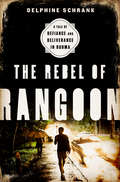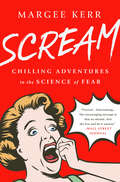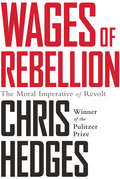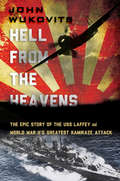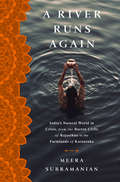- Table View
- List View
القـــــــوانــيــن والـسـياســــــــــــــــــــات الـمـتـعـلـقــــــــة بحـمـايـــة حقــــــــــوق أصــــحـــــاب الــهــمـــ
by Dubai Police Academyالقـــــــوانــيــن والـسـياســــــــــــــــــــات الـمـتـعـلـقــــــــة بحـمـايـــة حقــــــــــوق أصــــحـــــاب الــهــمـــ
El sueño en la infancia
by Alberto Soler y Concepción Roger¿Cómo es el sueño normal en la infancia? ¿Cómo y cuánto duermen los niños? ¿Problemas para dormir? ¿Tiene riesgos el colecho? En este texto breve, didáctico y riguroso, Alberto Soler responde a estas y otras preguntas y explica cómo es la estructura del sueño y cómo este evoluciona a lo largo de la infancia, además de proponer rutinas adaptables a cada familia. Para profundizar en temas relacionados con la crianza, recomendamos el ebook <i>Hijos y padres felices</i>, de Alberto Soler y Concepción Roger, que incluye “El sueño en la infancia”, además de capítulos dedicados a la alimentación, la operación pañal, la guardería, las pantallas y los estilos parentales, entre otros.
Los terribles dos años y las rabietas
by Alberto Soler y Concepción Roger¿Por qué se producen las rabietas? ¿Son todas iguales? En este texto breve, didáctico y riguroso, Alberto Soler responde a estas y otras preguntas y explica cómo manejarlas y prevenirlas. Para profundizar en temas relacionados con la crianza, recomendamos el ebook <i>Hijos y padres felices</i>, de Alberto Soler y Concepción Roger, que incluye “Los terribles dos años y las rabietas”, además de capítulos dedicados a la alimentación, el sueño, la guardería, las pantallas y los estilos parentales, entre otros.
Los niños y las pantallas
by Alberto Soler y Concepción Roger¿Debo permitir que mis hijos vean dibujos en el móvil? ¿Es perjudicial la tecnología? En este texto breve, didáctico y riguroso, Alberto Soler responde a estas y otras preguntas y explica la relación entre los niños y las pantallas y la conveniencia (o no) de exponer a nuestros hijos a móviles, tablets y televisión. Para profundizar en temas relacionados con la crianza, recomendamos el ebook Hijos y padres felices, de Alberto Soler y Concepción Roger, que incluye “Los niños y las pantallas”, además de capítulos dedicados a la alimentación, el sueño, la operación pañal, la guardería y los estilos parentales, entre otros.
Hijos y padres felices
by Alberto Soler y Concepción RogerUna guía amena, didáctica y rigurosa que ayuda a entender el desarrollo de nuestros hijos en sus primeros años de vida y propone recomendaciones adaptables a cada familia. En la primera etapa de la vida de un niño su cuerpo y su cerebro se transforman a un ritmo vertiginoso. El pequeño pasa de ser un bebé que hace poco más que llorar y mamar, a ser un niño que nos pregunta por todo. ¿Qué es lo que necesita realmente un bebé?, ¿por qué llora en cuanto le soltamos?, ¿es malo que duerma con nosotros?, ¿hasta cuándo seguir con la lactancia?, ¿cómo actuar ante las rabietas?, ¿le dejamos el móvil para que se distraiga?, ¿cuándo necesita ir a la guardería?, ¿le castigamos cuando se porte mal?, ¿cómo establecemos límites? Este libro responde a estas y muchas otras preguntas, abarcando gran parte de lo que ocurre durante los primeros años de vida de nuestros hijos. Unos años que en el futuro recordaréis como vuestros mejores años.
La guardería, ¿es necesaria?
by Alberto Soler y Concepción Roger¿Cómo conciliar? ¿Necesito una guardería? ¿A qué edad debo escolarizar a mi hijo? En este texto breve, didáctico y riguroso, Alberto Soler responde a estas y otras preguntas y explica cómo es la adaptación a estos centros y que pautas debemos tener en cuenta. Para profundizar en temas relacionados con la crianza, recomendamos el ebook <i>Hijos y padres felices</i>, de Alberto Soler y Concepción Roger, que incluye “La guardería, ¿es necesaria?”, además de capítulos dedicados a la alimentación, el sueño, la operación pañal, las pantallas y los estilos parentales, entre otros.
Pediatric Patients' Rights and Responsibilities
by Manar AlHudayanA pamphlet on Pediatric Patients' Rights and Responsibilities.
The Law of the Land: A Grand Tour of Our Constitutional Republic
by Akhil Reed AmarFrom Kennebunkport to Kauai, from the Rio Grande to the Northern Rockies, ours is a vast republic. While we may be united under one Constitution, separate and distinct states remain, each with its own constitution and culture. Geographic idiosyncrasies add more than just local character. Regional understandings of law and justice have shaped and reshaped our nation throughout history. America’s Constitution, our founding and unifying document, looks slightly different in California than it does in Kansas. In The Law of the Land, renowned legal scholar Akhil Reed Amar illustrates how geography, federalism, and regionalism have influenced some of the biggest questions in American constitutional law. Writing about Illinois, "the land of Lincoln,” Amar shows how our sixteenth president’s ideas about secession were influenced by his Midwestern upbringing and outlook. All of today’s Supreme Court justices, Amar notes, learned their law in the Northeast, and New Yorkers of various sorts dominate the judiciary as never before. The curious Bush v. Gore decision, Amar insists, must be assessed with careful attention to Florida law and the Florida Constitution. The second amendment appears in a particularly interesting light, he argues, when viewed from the perspective of Rocky Mountain cowboys and cowgirls. Propelled by Amar’s distinctively smart, lucid, and engaging prose, these essays allow general readers to see the historical roots of, and contemporary solutions to, many important constitutional questions. The Law of the Land illuminates our nation’s history and politics, and shows how America’s various local parts fit together to form a grand federal framework.
Destruction Was My Beatrice: Dada and the Unmaking of the Twentieth Century
by Jed RasulaIn 1916, as World War I raged around them, a group of bohemians gathered at a small nightclub in Zurich, Switzerland for a series of bizarre performances. Three readers simultaneously recited a poem in three languages; a monocle-wearing teenager performed a spell from New Zealand; another young man flung bits of papier-mâché into the air and glued them into place where they landed. One of these artists called the sessions "both buffoonery and a requiem mass. ” Soon they would be known by a more evocative name: Dada. In Destruction Was My Beatrice, modernist scholar Jed Rasula presents the first narrative history of the emergence, decline, and legacy of Dada, showing how this strange artistic phenomenon spread across Europe and then the world in the wake of the Great War, fundamentally reshaping modern culture in ways we’re still struggling to understand today.
The Wise King: A Christian Prince, Muslim Spain, and the Birth of the Renaissance
by Simon R. Doubleday"If I had been present at the Creation,” the thirteenth-century Spanish philosopher-king Alfonso X is said to have stated, "Many faults in the universe would have been avoided. ” Known as El Sabio, "the Wise,” Alfonso was renowned by friends and enemies alike for his sparkling intellect and extraordinary cultural achievements. In The Wise King, celebrated historian Simon R. Doubleday traces the story of the king’s life and times, leading us deep into his emotional world and showing how his intense admiration for Spain’s rich Islamic culture paved the way for the European Renaissance. In 1252, when Alfonso replaced his more militaristic father on the throne of Castile and León, the battle to reconquer Muslim territory on the Iberian Peninsula was raging fiercely. But even as he led his Christian soldiers onto the battlefield, Alfonso was seduced by the glories of Muslim Spain. His engagement with the Arabic-speaking culture of the South shaped his pursuit of astronomy, for which he was famed for centuries, and his profoundly humane vision of the world, which Dante, Petrarch, and later Italian humanists would inherit. A composer of lyric verses, and patron of works on board games, hunting, and the properties of stones, Alfonso is best known today for his Cantigas de Santa María (Songs of Holy Mary), which offer a remarkable window onto his world. His ongoing struggles as a king and as a man were distilled--in art, music, literature, and architecture--into something sublime that speaks to us powerfully across the centuries. An intimate biography of the Spanish ruler in whom two cultures converged, The Wise King introduces readers to a Renaissance man before his time, whose creative energy in the face of personal turmoil and existential threats to his kingdom would transform the course of Western history.
Lactivism: How Feminists and Fundamentalists, Hippies and Yuppies, and Physicians and Politicians Made Breastfeeding Big Business and Bad Policy
by Courtney JungIs breast really best? Breastfeeding is widely assumed to be the healthiest choice, yet growing evidence suggests that its benefits have been greatly exaggerated. New moms are pressured by doctors, health officials, and friends to avoid the bottle at all costs--often at the expense of their jobs, their pocketbooks, and their well-being. In Lactivism, political scientist Courtney Jung offers the most deeply researched and far-reaching critique of breastfeeding advocacy to date. Drawing on her own experience as a devoted mother who breastfed her two children and her expertise as a social scientist, Jung investigates the benefits of breastfeeding and asks why so many people across the political spectrum are passionately invested in promoting it, even as its health benefits have been persuasively challenged. What emerges is an eye-opening story about class and race in America, the big business of breastfeeding, and the fraught politics of contemporary motherhood.
The Collapse: The Accidental Opening of the Berlin Wall
by Mary Elise SarotteThe Berlin Wall was erected in 1961 to end all traffic between the city’s two halves: the democratic west and the communist east. The iconic symbol of a divided Europe, the Wall became a focus of western political pressure on East Germany; as Ronald Reagan’s famously said in a 1987 speech in Berlin, "Mr. Gorbachev, tear down this wall!” But as award-winning historian Mary Sarotte shows in [Title TK] , the opening of the Wall on November 9, 1989 was not, as is commonly believed, the East German government’s deliberate concession to outside influence. It was an accident. A carelessly worded memo written by mid-level bureaucrats, a bumbling press conference given by an inept member of the East German Politburo, the negligence of government leaders, the bravery of ordinary people in East and West Berlin--these combined to bring about the end of nearly forty years of oppression, fear, and enmity in divided Berlin. When the news broke, Washington and Moscow could only stand by and watch as Tom Brokaw and other journalists narrated the televised broadcast of this critical moment in the thawing of the cold war. Sarotte opens her story in the months leading up to that fateful day. Following East German dissidents, she shows how their efforts coalesced around opposition to the regime’s restrictions on foreign travel. The city of Leipzig, close to the border with Czechoslovakia, became a hothouse of activism, and protests there quickly grew into massive demonstrations. The East German Politburo hoped to limit its citizens’ knowledge of these marches, but two daring dissidents, East Berliners Aram Radomski and Siegbert Schefke, managed to evade the Stasi and film the largest of them from a church tower. They then smuggled their tape to West Germany; broadcast in both nations, the footage galvanized activists across East Germany, and precipitated the stunning developments on November 9. Facing mounting pressure from its own citizens, the East German Politburo planned to put off enacting any meaningful change to its travel policy by issuing a deceptive ruling that would appear to offer more freedom, but which in fact would allow the state to maintain strict control over its citizen’s movements. But the bureaucrats tasked with preparing the "new” regulations misunderstood their task, and instead drafted a declaration that said East Germans could freely leave the country. This declaration ended up in the hands of regime spokesman Günter Schabowski, who announced the rules at a press conference without understanding their import. Stunned reporters were soon broadcasting the news around the world. Crowds of East Germans began streaming to the Wall, prompting a showdown with border guards, who received no support or direction from East German leadership as the throngs multiplied. By 11:30, Harald Jäger, a second-tier passport control officer, had had enough and finally opened the wall to the mob gathering outside his gate. Even though East German forces successfully regained control by the morning, it was too late--for the wall, for the regime, and for Communism in Eastern Europe. Drawing on evidence from archives in multiple countries and languages, along with dozens of interviews with key actors, including Harald Jäger, [Title TK] is the definitive account of the event that brought down the East German Politburo and came to represent the final collapse of the Cold War order.
Washington: A History of Our National City
by Tom LewisOn January 24, 1791, President George Washington chose the site for the young nation’s capital: ten miles square, it stretched from the highest point of navigation on the Potomac River, and encompassed the ports of Georgetown and Alexandria. From the moment the federal government moved to the District of Columbia in December 1800, Washington has been central to American identity and life. Shaped by politics and intrigue, poverty and largess, contradictions and compromises, Washington has been, from its beginnings, the stage on which our national dramas have played out. In Washington, the historian Tom Lewis paints a sweeping portrait of the capital city whose internal conflicts and promise have mirrored those of America writ large. Breathing life into the men and women who struggled to help the city realize its full potential, he introduces us to the mercurial French artist who created an ornate plan for the city “en grande”; members of the nearly forgotten anti-Catholic political party who halted construction of the Washington monument for a quarter century; and the cadre of congressmen who maintained segregation and blocked the city’s progress for decades. In the twentieth century Washington’s Mall and streets would witness a Ku Klux Klan march, the violent end to the encampment of World War I “Bonus Army” veterans, the 1963 March on Washington for Jobs and Freedom, and the painful rebuilding of the city in the wake of Martin Luther King, Jr. ’s assassination. “It is our national center,” Frederick Douglass once said of Washington, DC; “it belongs to us, and whether it is mean or majestic, whether arrayed in glory or covered in shame, we cannot but share its character and its destiny. ” Interweaving the story of the city’s physical transformation with a nuanced account of its political, economic, and social evolution, Lewis tells the powerful history of Washington, DC—the site of our nation’s highest ideals and some of our deepest failures.
Poems That Do Not Sleep
by Hassan Al NawwabHassan Al Nawwab is a former Iraqi soldier who came to Australia after the war with his family 20 years ago. With devastating simplicity, these imagistic poems speak of war and terror, of homesickness in exile, the blessings of peace and the pain of belonging. The collection is in two parts, ‘Tree Flying' and ‘Diaspora', and each poem is presented with its counterpart in Arabic on the opposite page, as translated from English by the poet himself.
Massacre: The Life and Death of the Paris Commune
by John MerrimanThe Paris Commune lasted for only 64 days in 1871, but during that short time it gave rise to some of the grandest political dreams of the nineteenth century—before culminating in horrific violence. Following the disastrous French defeat in the Franco-Prussian War, hungry and politically disenchanted Parisians took up arms against their government in the name of a more just society. They expelled loyalists and soldiers and erected barricades in the streets. In Massacre, John Merriman introduces a cast of inimitable Communards—from les pétroleuses (female incendiaries) to the painter Gustave Courbet—whose idealism fueled a revolution. And he vividly recreates the Commune’s chaotic and bloody end when 30,000 troops stormed the city, burning half of Paris and executing captured Communards en masse. A stirring evocation of the spring when Paris was ablaze with cannon fire and its citizens were their own masters, Massacre reveals how the indomitable spirit of the Commune shook the very foundations of Europe.
A Just and Generous Nation: Abraham Lincoln and the Fight for American Opportunity
by Harold Holzer Norton GarfinkleIn A Just and Generous Nation, the eminent historian Harold Holzer and the noted economist Norton Garfinkle present a groundbreaking new account of the beliefs that inspired our sixteenth president to go to war when the Southern states seceded from the Union. Rather than a commitment to eradicating slavery or a defense of the Union, they argue, Lincoln’s guiding principle was the defense of equal economic opportunity. Lincoln firmly believed that the government’s primary role was to ensure that all Americans had the opportunity to better their station in life. As president, he worked tirelessly to enshrine this ideal within the federal government. He funded railroads and canals, supported education, and, most importantly, issued the Emancipation Proclamation, which opened the door for former slaves to join white Americans in striving for self-improvement. In our own age of unprecedented inequality, A Just and Generous Nation reestablishes Lincoln’s legacy as the protector not just of personal freedom but of the American dream itself.
Smart People Don't Diet: How the Latest Science Can Help You Lose Weight Permanently
by MarkeyForget the fad diets: an associate professor of psychology (Rutgers) offers a science-based approach to healthy eating and weight management (backed by research from scientists, doctors, nutritionists, and psychologists).
Mission High: One School, How Experts Tried to Fail It, and the Students and Teachers Who Made It Triumph
by Kristina Rizga"This book is a godsend . . . a moving portrait for anyone wanting to go beyond the simplified labels and metrics and really understand an urban high school, and its highly individual, resilient, eager and brilliant students and educators. ” --Dave Eggers, co-founder, 826 National and ScholarMatch Darrell is a reflective, brilliant young man, who never thought of himself as a good student. He always struggled with his reading and writing skills. Darrell’s father, a single parent, couldn't afford private tutors. By the end of middle school, Darrell’s grades and his confidence were at an all time low. Then everything changed. When education journalist Kristina Rizga first met Darrell at Mission High School, he was taking AP calculus class, writing a ten-page research paper, and had received several college acceptance letters. And Darrell was not an exception. More than 80 percent of Mission High seniors go to college every year, even though the school teaches large numbers of English learners and students from poor families. So, why has the federal government been threatening to close Mission High--and schools like it across the country? The United States has been on a century long road toward increased standardization in our public schools, which resulted in a system that reduces the quality of education to primarily one metric: standardized test scores. According to this number, Mission High is a "low-performing” school even though its college enrollment, graduation, attendance rates and student surveys are some of the best in the country. The qualities that matter the most in learning--skills like critical thinking, intellectual engagement, resilience, empathy, self-management, and cultural flexibility--can’t be measured by multiple-choice questions designed by distant testing companies, Rizga argues, but they can be detected by skilled teachers in effective, personalized and humane classrooms that work for all students, not just the most motivated ones. Based on four years of reporting with unprecedented access, the unforgettable, intimate stories in these pages throw open the doors to America’s most talked about--and arguably least understood--public school classrooms where the largely invisible voices of our smart, resilient students and their committed educators can offer a clear and hopeful blueprint for what it takes to help all students succeed.
You're Making Me Hate You: A Cantankerous Look at the Common Misconception That Humans Have Any Common Sense Left
by Corey TaylorIn the tradition of the late great George Carlin, New York Times bestselling author and lead singer of Slipknot and Stone Sour Corey Taylor sounds off in hilarious fashion about the many vagaries of modern life that piss him off. Whether it’s people’s rude behavior in restaurants and malls, the many indignities of air travel, eye-searingly terrible fashion choices, dangerously clueless drivers, and--most of all--the sorry state of much modern music, Taylor’s humor and insight cover civil society’s seeming decline--sparing no one along the way, least of all himself. Holding nothing back and delivered in Taylor’s inimitable voice, You’re Making Me Hate You is a cathartic critique of the strange world in which we find ourselves.
Princes at War: The Bitter Battle Inside Britain's Royal Family in the Darkest Days of WWII
by Deborah CadburyThis book tells the story of four sons of King George V during the period that the monarchy faced the greatest threats to its survival in the modern era the crisis of the abdication, and the nationwide threat to Britain of the Nazis, inside and out. The threat of world war echoed the war within the royal family. Played out against the cataclysm of the Second World War the princes’ actions for good or ill became all the more significant and magnified on a world stage. The war served to unleash passions at a time when the very function of royalty as head of the empire was under threat. It served as a crucible that made or destroyed each of the princes. One would die in mysterious circumstances forever mired in conspiracy and scandal; another was destroyed in all but name, a third slipped into comfortable obscurity, and the fourth rose to new heights of achievement redefining the monarchy for the modern age. The catalyst for the story is one dangerous American woman: Wallis Simpson. The consequences of her actions drive one prince to an early grave and the other to become a living wreck of a man nursing long held grievances. Recently discovered letters show that Wallis herself was caught in a trap of her own making: a life entombed in a gilded cage with a man she could not respect and whom she tried to leave. Everything she wished for, she destroyed. Famously she is said to have been sent 17 carnations by the Nazi Joachim von Ribbentrop, representing their 17 sexual trysts. George VI’s story is also an allegory for a much wider theme. Starting where the film The Kings Speech ends, a revealing transformation in his character takes place. As he steps up with some dread to the role of king that his older brother spurns, his horizons are widened and he falls into the sphere of influence of brilliant leaders such as Winston Churchill. As Hitler stole country after country for the Third Reich, George VI rose to the challenge, to find the very best in himself, and was transformed by the effort. By the end he can stand alone at the helm, without the support of those who helped him on his way Like fables of old, taking on the challenge transforms the quality of the man but it is also killing him.
The Rebel of Rangoon: A Tale of Defiance and Deliverance in Burma
by Delphine SchrankAn epic, multigenerational story of courage and sacrifice set in a tropical dictatorship on the verge of massive transformation, The Rebel of Rangoon captures a gripping moment of possibility in Burma. Journalist Delphine Schrank spent four years underground tracking Burmese dissidents whose semi-clandestine existence and fight for democracy remained largely hidden behind their globally celebrated figurehead, Aung San Suu Kyi. With intimate, vivid prose, Schrank follows the inner life of a daredevil young dissident, his friends and rivals, across rural hamlets and flickering internet connections, into prison cells and safe houses, and deep into their own hearts, as they escape spies and outwit interrogators, fall in love or slip into insanity. Through that dissident’s perspective, Schrank unfurls a harrowing account of a country’s efforts to emerge from military dictatorship, how a movement of dissidents came into being, how it almost died, and how it pushed its government to crack apart and begin an irreversible process of political reform. In doing so, Schrank delivers a profoundly human exploration of daring and defiance and of the power and meaning of freedom.
Scream: Chilling Adventures in the Science of Fear
by Margee KerrShiver-inducing science not for the faint of heart. No one studies fear quite like Margee Kerr. A sociologist who moonlights at one of America’s scariest and most popular haunted houses, she has seen grown men laugh, cry, and push their loved ones aside as they run away in terror. And she’s kept careful notes on what triggers these responses and why. Fear is a universal human experience, but do we really understand it? If we’re so terrified of monsters and serial killers, why do we flock to the theaters to see them? Why do people avoid thinking about death, but jump out of planes and swim with sharks? For Kerr, there was only one way to find out. In this eye-opening, adventurous book, she takes us on a tour of the world’s scariest experiences: into an abandoned prison long after dark, hanging by a cord from the highest tower in the Western hemisphere, and deep into Japan’s mysterious "suicide forest. ” She even goes on a ghost hunt with a group of paranormal adventurers. Along the way, Kerr shows us the surprising science from the newest studies of fear--what it means, how it works, and what it can do for us. Full of entertaining science and the thrills of a good ghost story, this book will make you think, laugh--and scream.
Wages of Rebellion
by Chris HedgesIn the face of modern conditions, revolution is inevitable. The rampant inequality that exists between the political and corporate elites and the struggling masses; the destruction wreaked upon our environment by faceless, careless corporations; the steady stripping away of our civil liberties and the creation of a monstrous surveillance system--all of these have combined to spark a profound revolutionary moment. Corporate capitalists, dismissive of the popular will, do not see the fires they are igniting. In Wages of Rebellion, Chris Hedges--a renowned chronicler of the malaise and sickness of a society in terminal moral decline--investigates what social and psychological factors cause revolution and resistance. Focusing on the stories of radicals and dissenters from around the world and throughout history, and drawing on an ambitious overview of prominent philosophers, historians, and novelists, Hedges explores what it takes to be a rebel in modern times. Hedges, using a term coined by the theologian Reinhold Niebuhr, cites "sublime madness” as the essential force that guides the actions of rebels--the state of passion that causes the rebel to engage in an unwavering fight against overwhelmingly powerful and oppressive forces. From South African activists who dedicated their lives to ending apartheid, to contemporary anti-fracking protestors in Canada, to whistleblowers in pursuit of transparency, Wages of Rebellion shows the cost of a life committed to speaking truth to power and demanding justice. This is a fight that requires us to find in acts of rebellion the sparks of life, an intrinsic meaning that lies beyond the possibility of success. For Hedges, resistance is not finally defined by what we achieve, but by what we become.
Hell From the Heavens: The Epic Story of the USS Laffey and World War II's Greatest Kamikaze Attack
by WukovitsOn the morning of April 16, 1945, the crewmen of the USS Laffey saw what seemed to be the entire Japanese air force assembled directly above. They were about to become the targets of the largest single-ship kamikaze attack of World War II. By the time the unprecedented assault was finished, thirty-two sailors were dead and more than seventy wounded. Although she lay shrouded in smoke and fire for hours, the Laffey somehow survived. The gutted American warship limped from Okinawa’s shore for home, where the ship and crew would be feted as heroes. Using personal interviews with survivors, the memoirs of crew members, and their wartime correspondence, John Wukovits breathes life into the story of this forgotten historic event.
A River Runs Again: India's Natural World in Crisis, from the Barren Cliffs of Rajasthan to the Farmlands of Karnataka
by Meera SubramanianCrowded, hot, subject to violent swings in climate, with a government unable or unwilling to face the most vital challenges, the rich and poor increasingly living in worlds a∂ for most of the world, this picture is of a possible future. For India, it is the very real present. In this lyrical exploration of life, loss, and survival, Meera Subramanian travels in search of the ordinary people and microenterprises determined to revive India’s ravaged natural world: an engineer-turned-farmer brings organic food to Indian plates; villagers resuscitate a river run dry; cook stove designers persist on the quest for a smokeless fire; biologists bring vultures back from the brink of extinction; and in Bihar, one of India’s most impoverished states, a bold young woman teaches adolescents the fundamentals of sexual health. While investigating these five environmental challenges, Subramanian discovers the stories that renew hope for a nation with the potential to lead India and the planet into a sustainable and prosperous future.

